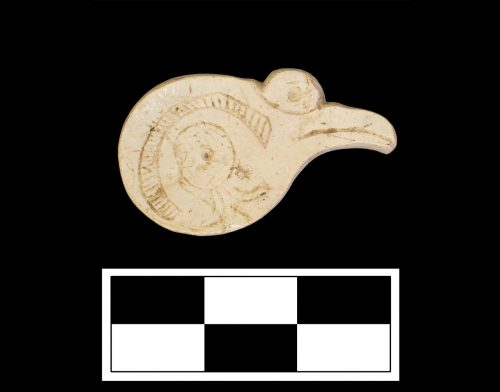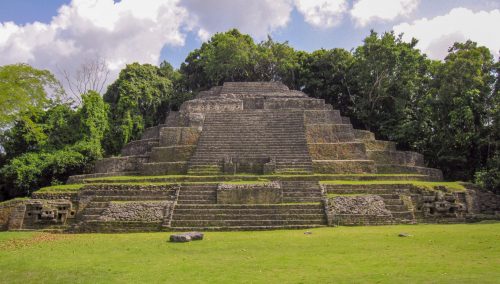Project Archaeologist: Arianne Boileau
What effects did the Spanish and their colonial policies have on Maya communities living on the Colonial frontier? More specifically, to what extent did the Maya transform or maintain the traditional ways in which they used animal resources during the Colonial period? The archaeological site of Lamanai, Belize, offers a great opportunity to answer these questions. Lamanai was continuously occupied during the times immediately before and after contact with the Spanish. It also produced large assemblages of archaeological animal remains recovered from various types of households: elite, non-elite, and a possible community leader.

Lamanai is a large Maya center located in northern Belize. Forty years of research at the site by David Pendergast, Elizabeth Graham, and Scott Simmons, among others, has documented an occupation of more than 2000 years. During the time before Spanish contact, Lamanai was a dynamic trading center. Exotic objects found at the site include copper, jade, obsidian, and marine shell (see photo). The Lamaneros’ prosperity was likely tied to the site’s location on the New River Lagoon. This river was one of the “highways” that allowed passage from the Caribbean Sea to the interior. Lamanai fell under Spanish control in 1544. However, it occupied an interesting position in the Colonial world, because it was located on the edge of the zone under Spanish control in the Yucatan Peninsula. It remains unclear how well the Spanish controlled Lamanai and its population. Previous analyses of lithic, ceramic, and metal artifacts have revealed continuity in socio-political structures but a change in religious practices by the Lamaneros over the Colonial period. Did animal use follow a similar trajectory?
Over the past five years, I have been analyzing the Lamanai archaeological animal remains for my dissertation. I am interested in documenting the extent of change or resilience in Lamanai’s economic and socio-political structures as they relate to animal use: Did Spanish colonial policies force the Lamaneros to modify their exploitation of local resources? Did these policies disrupt the trade of animal resources among Maya communities and beyond? Did

the Lamaneros, in particular the community’s ruler, continue to manipulate animal resources as a means to maintain their status and power? For all these questions, I consider how Maya individuals and groups of different statuses and occupations in the Lamanai community lived and adapted to the new reality that was the Colonial world. As such, my project will be one of the first Maya faunal studies to examine how one’s status and occupation within the community may have mediated the impact of Spanish rule.